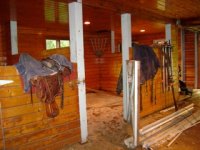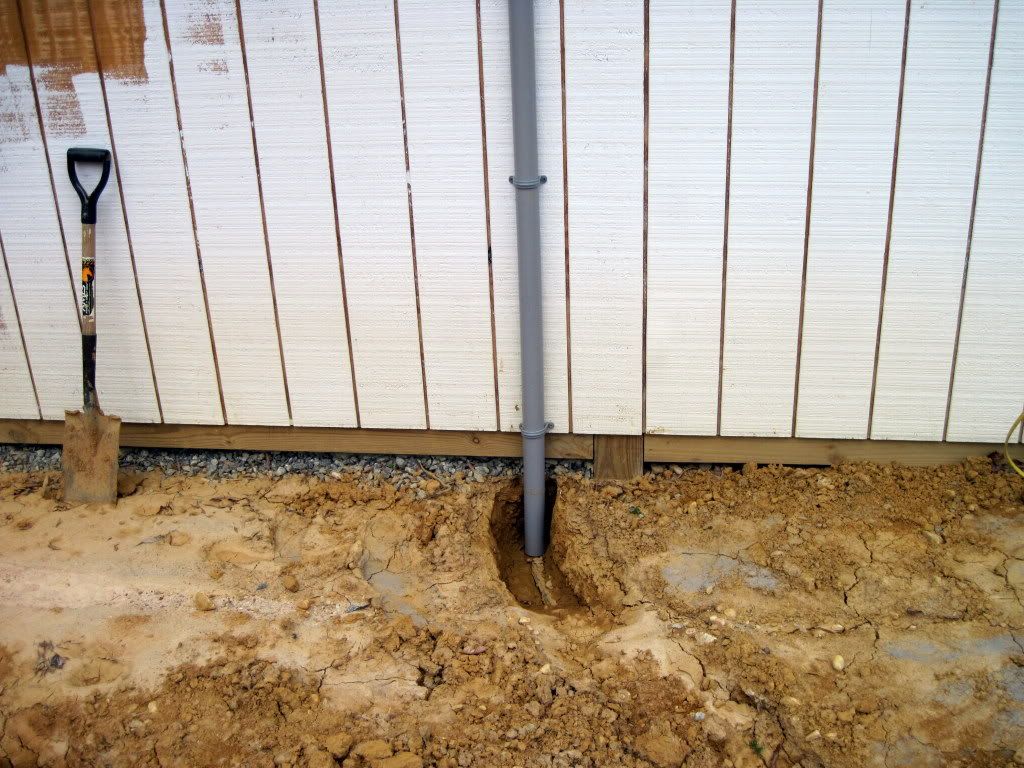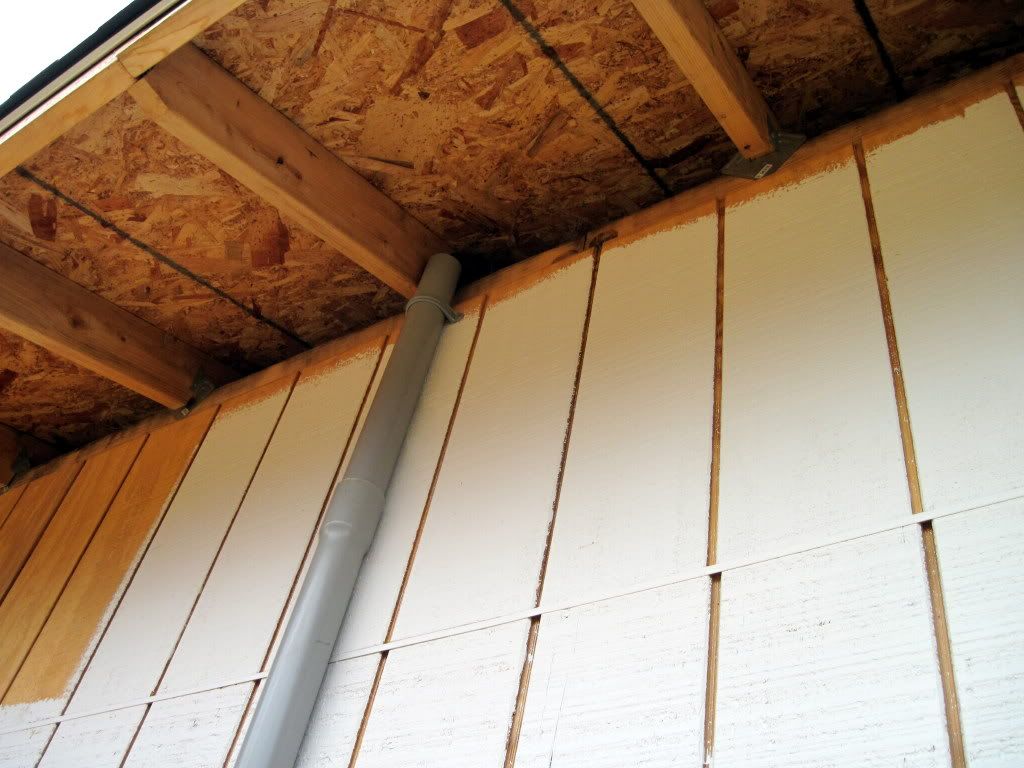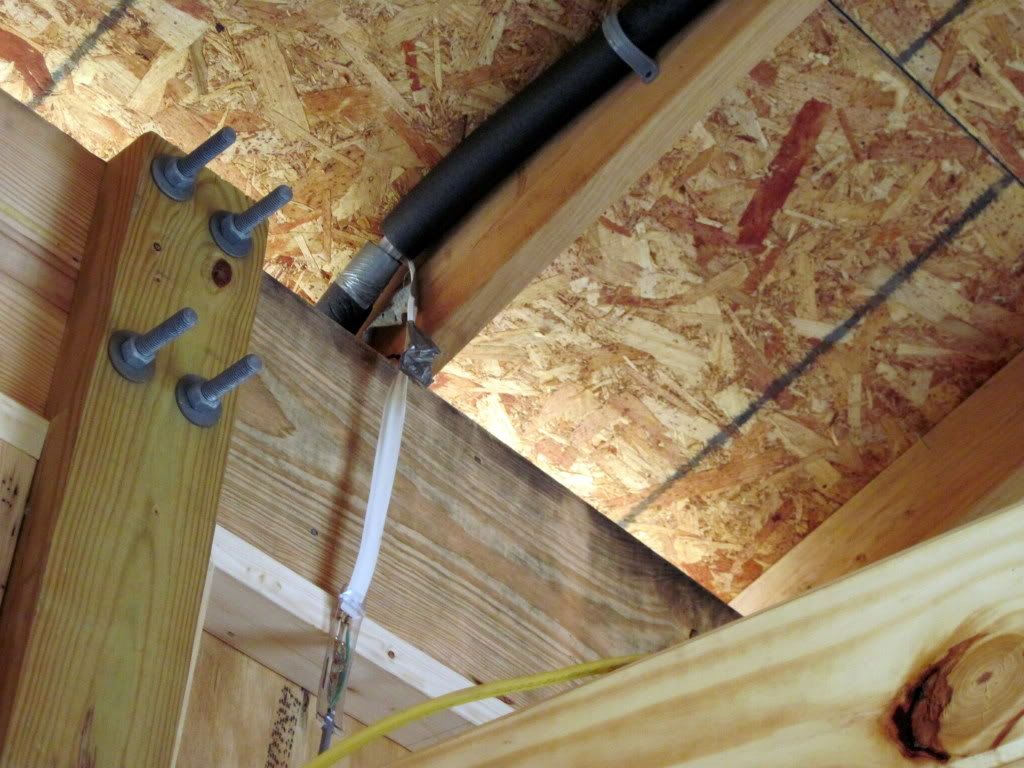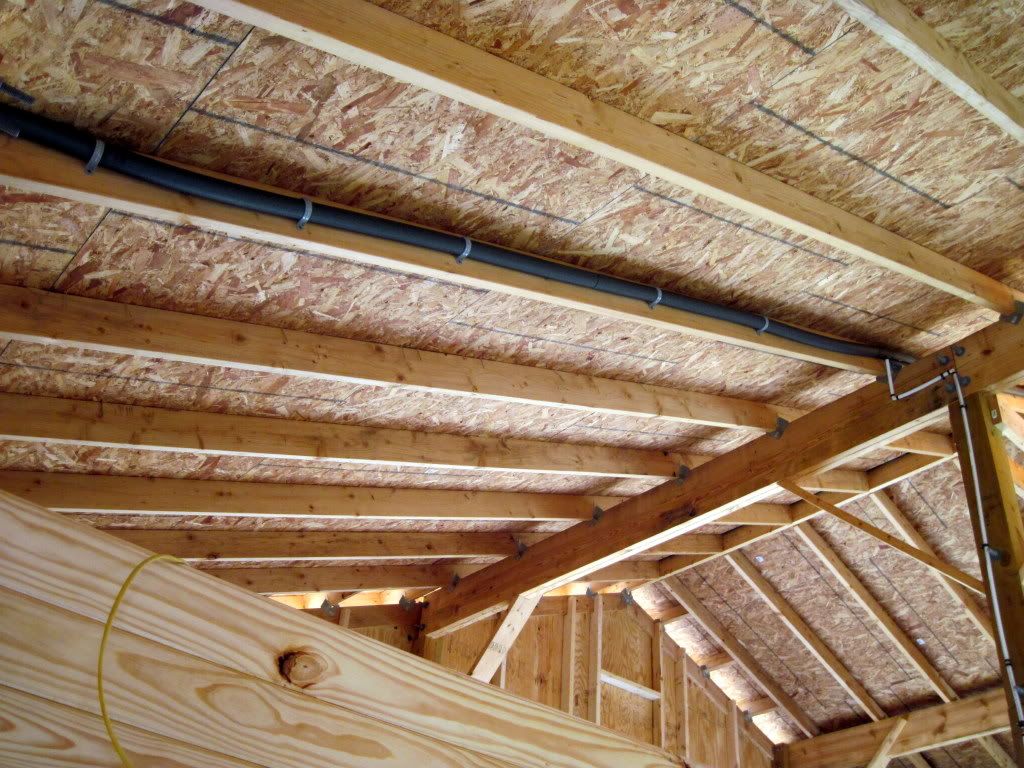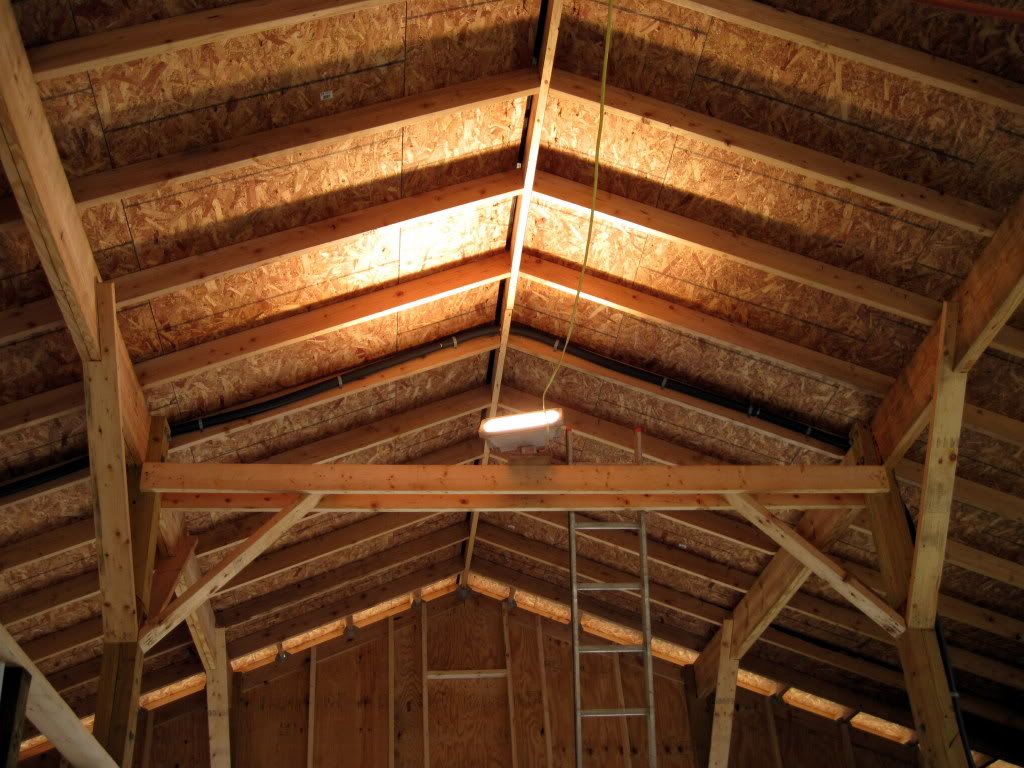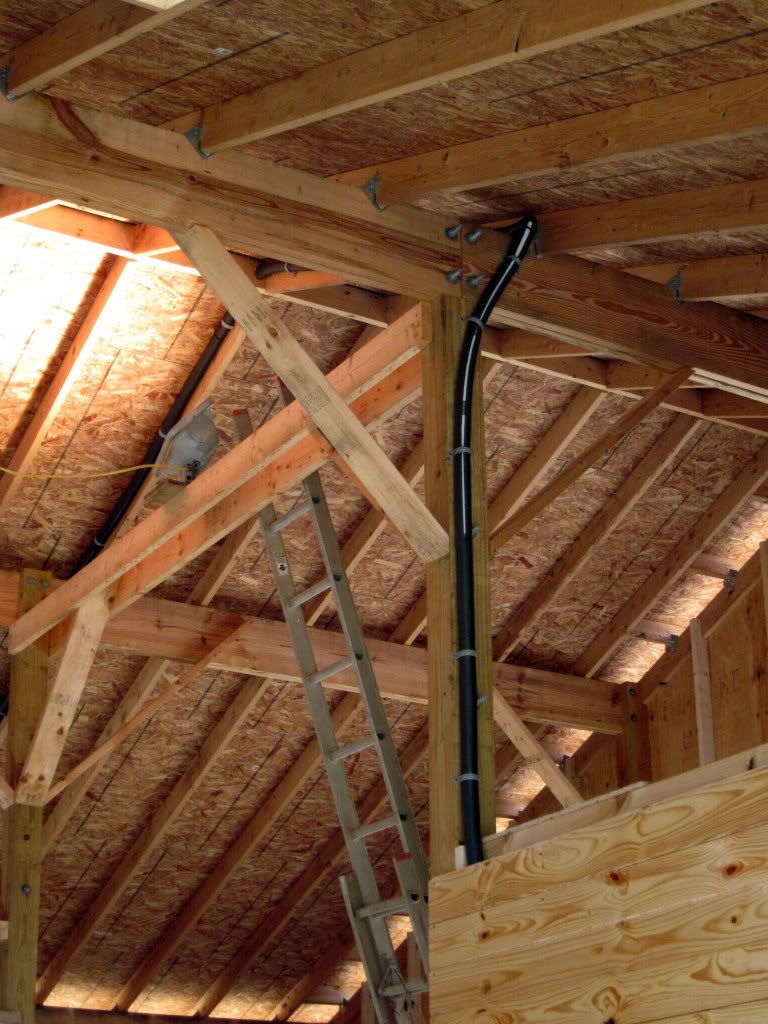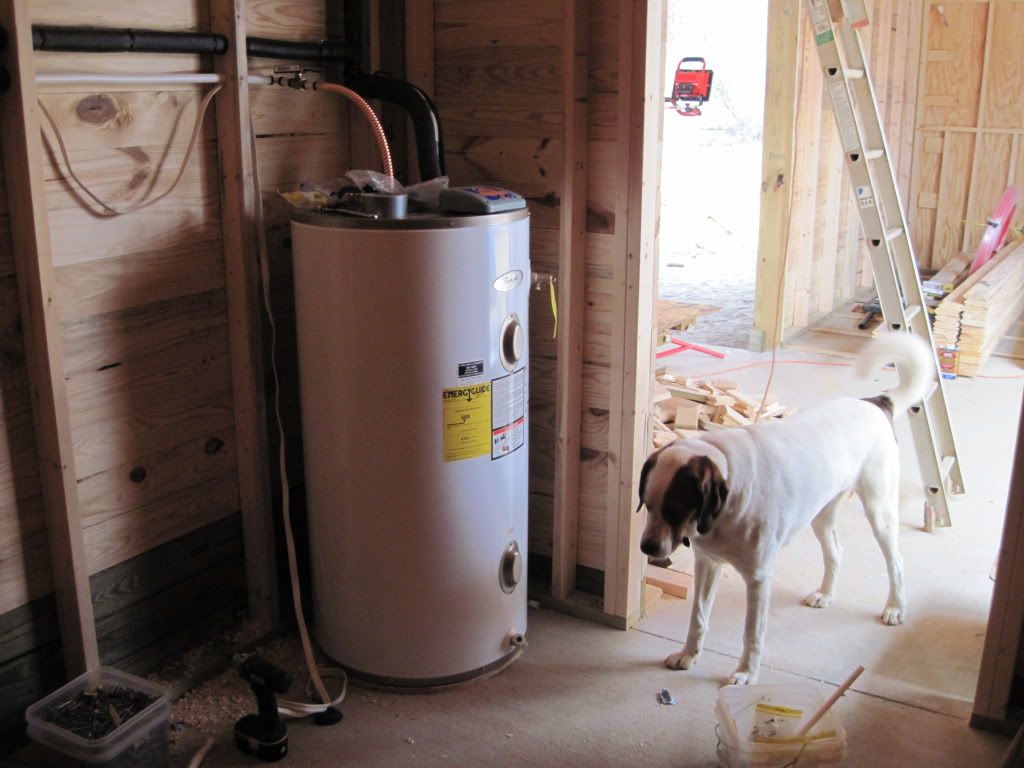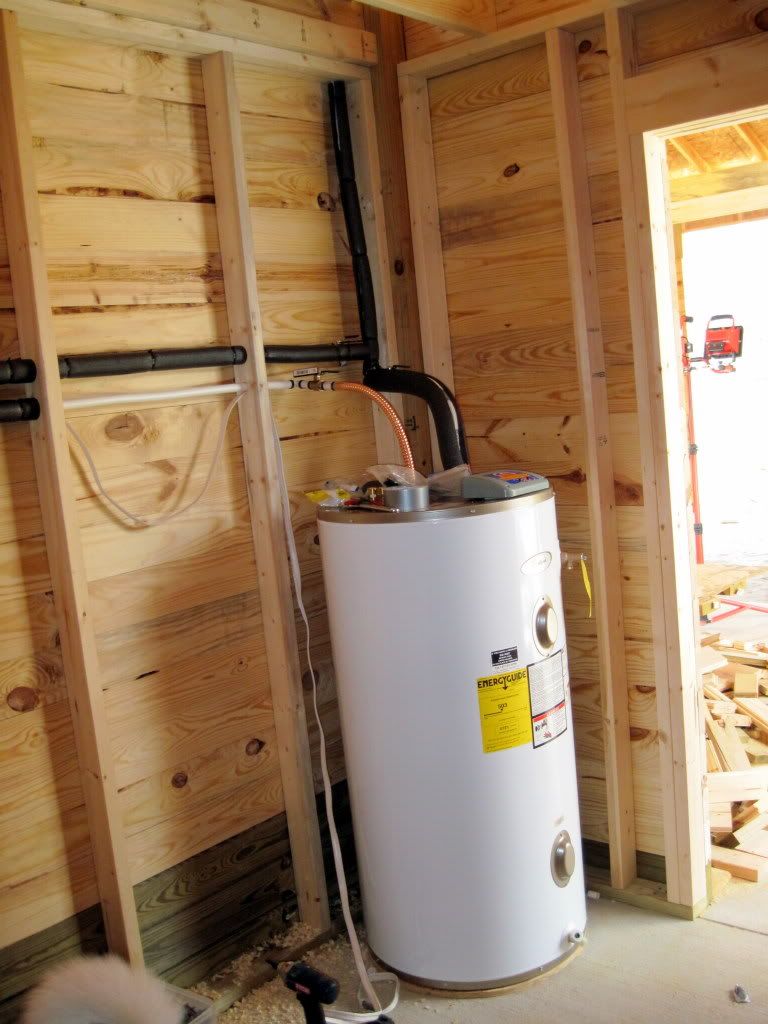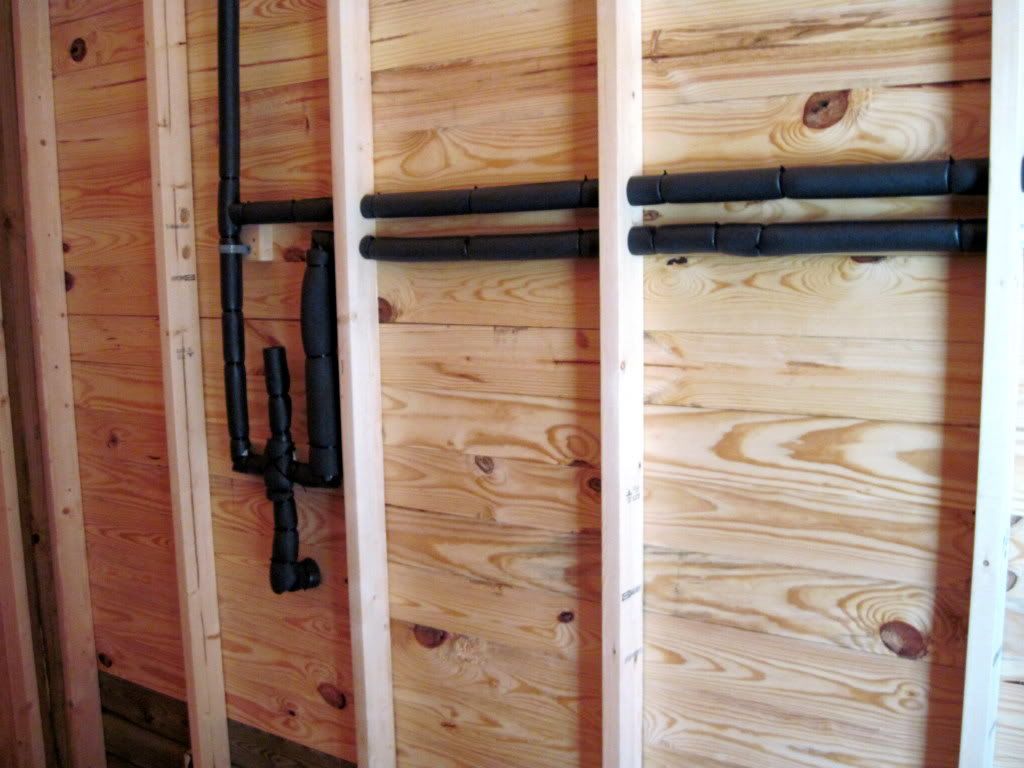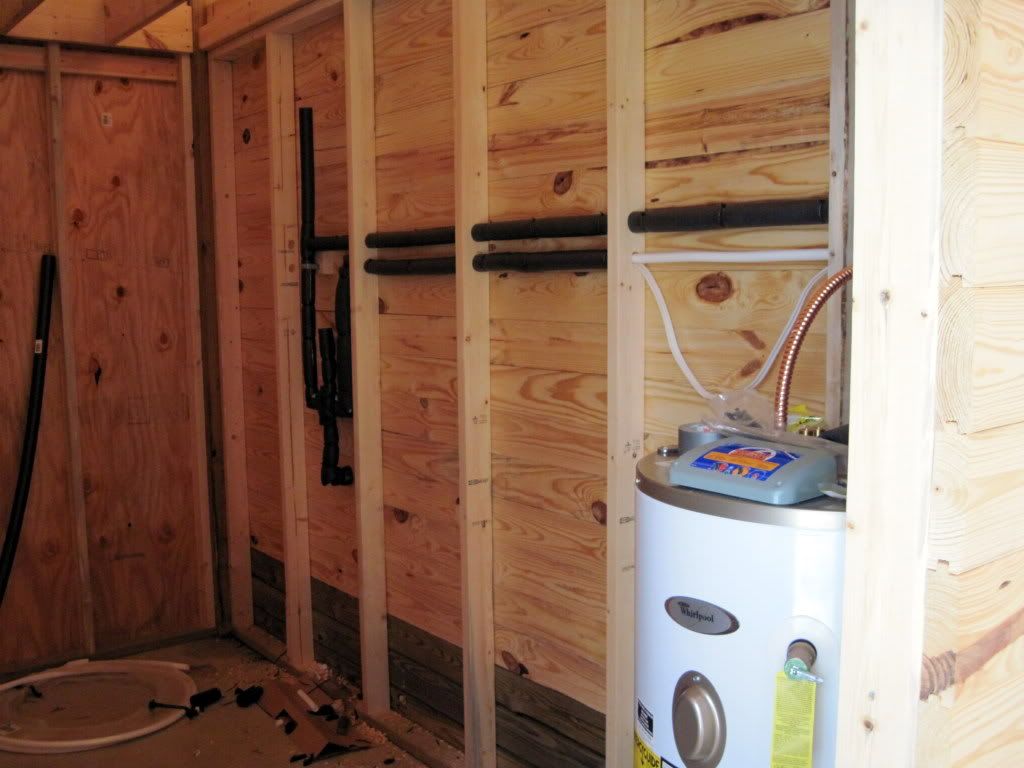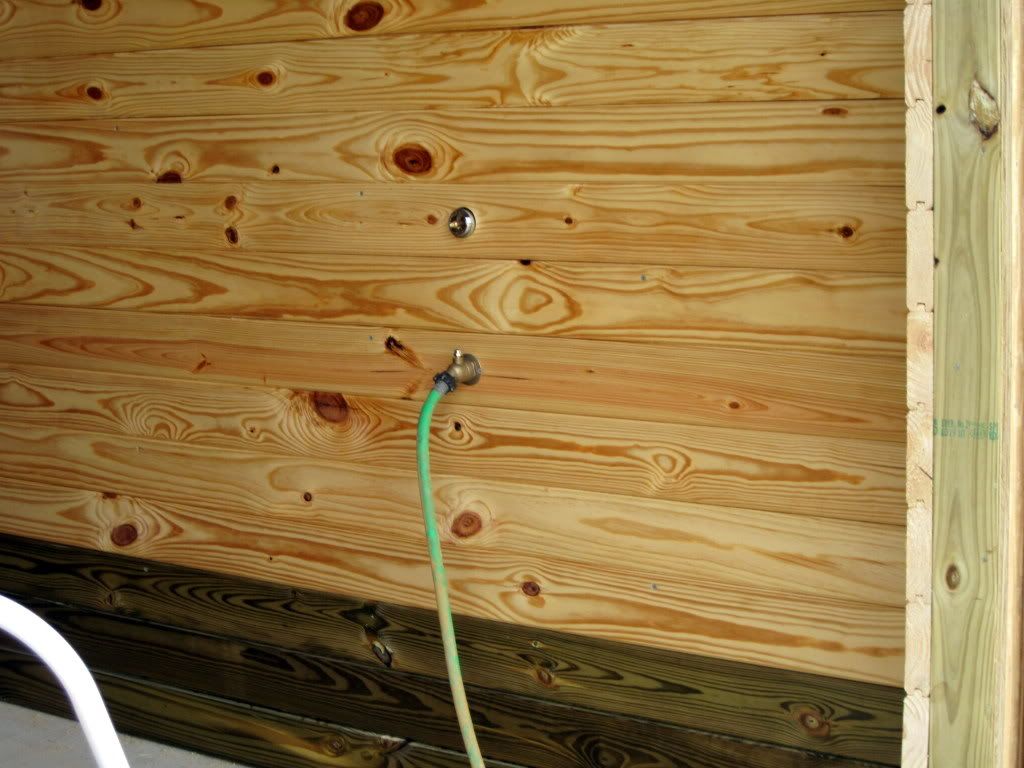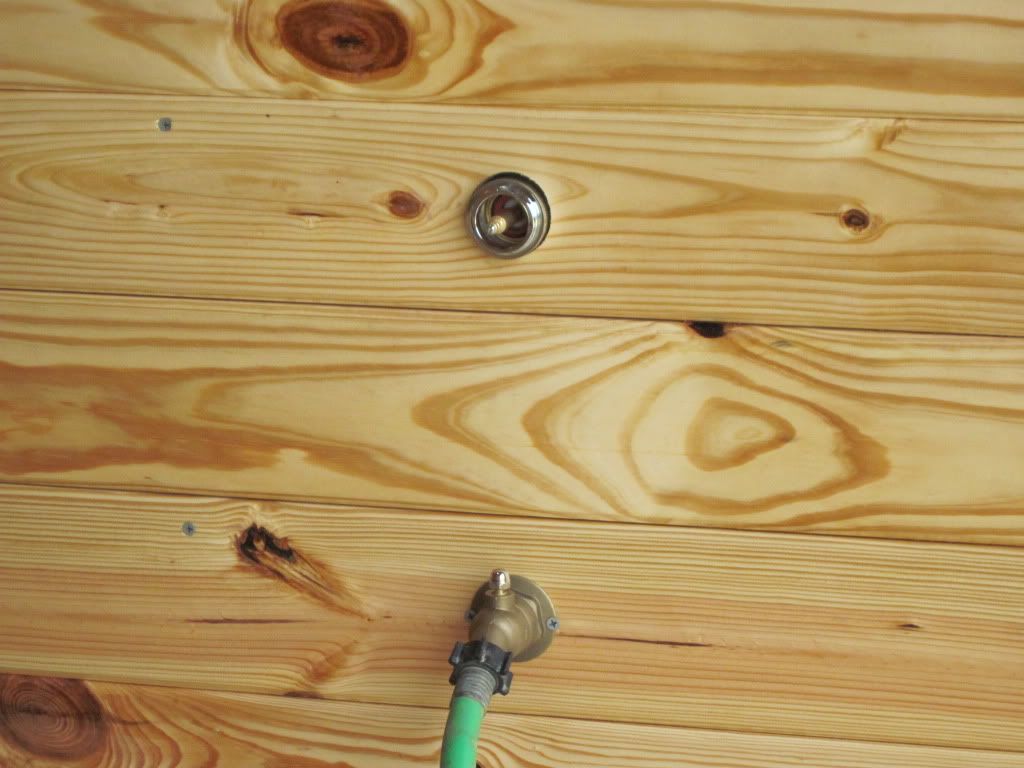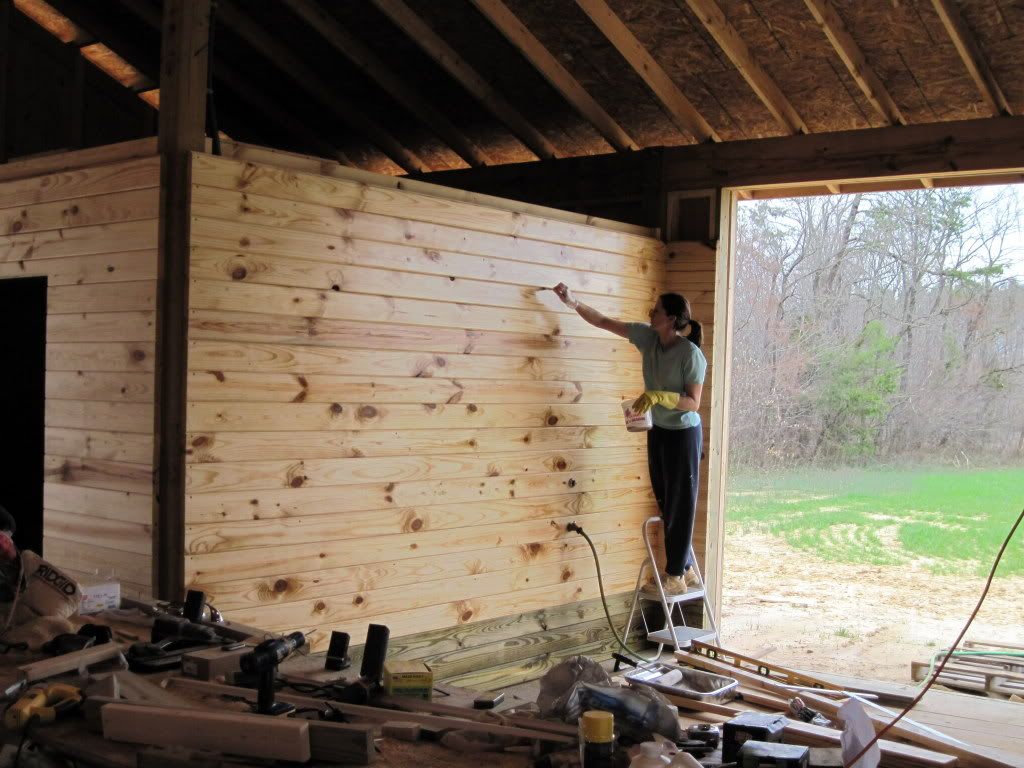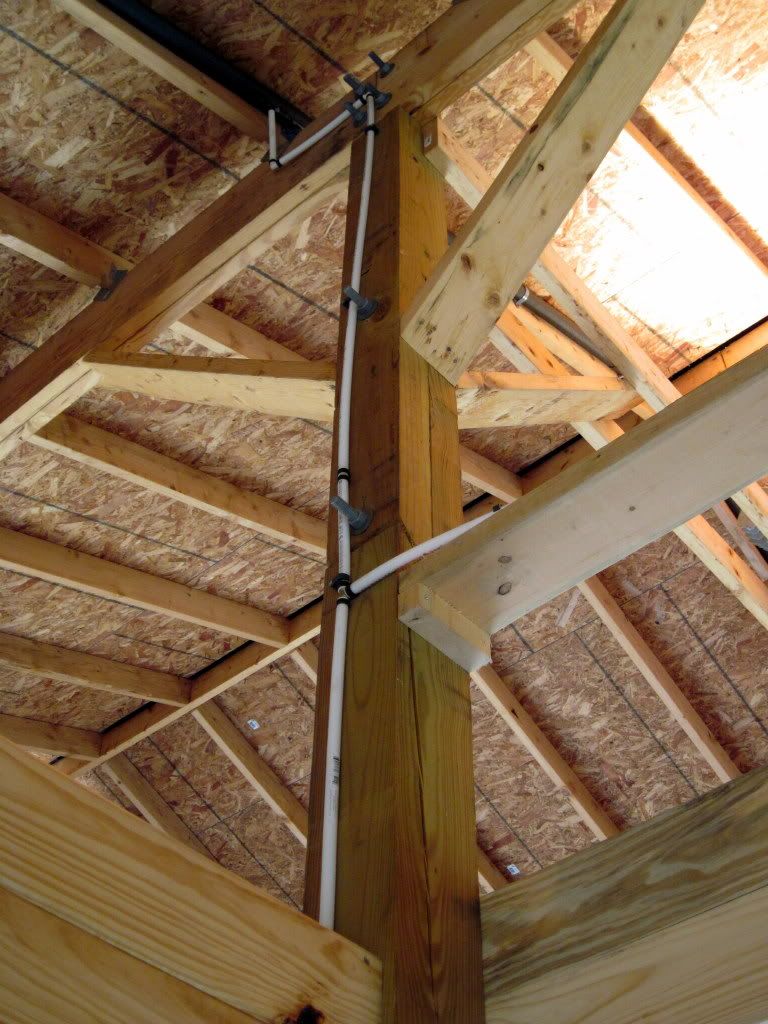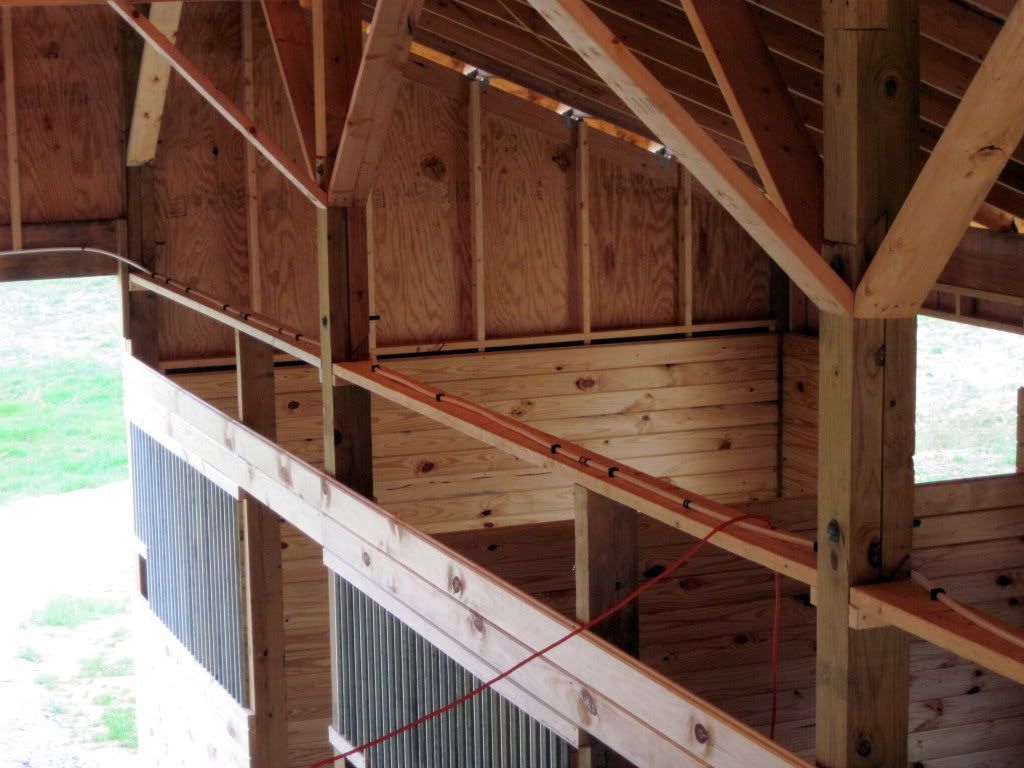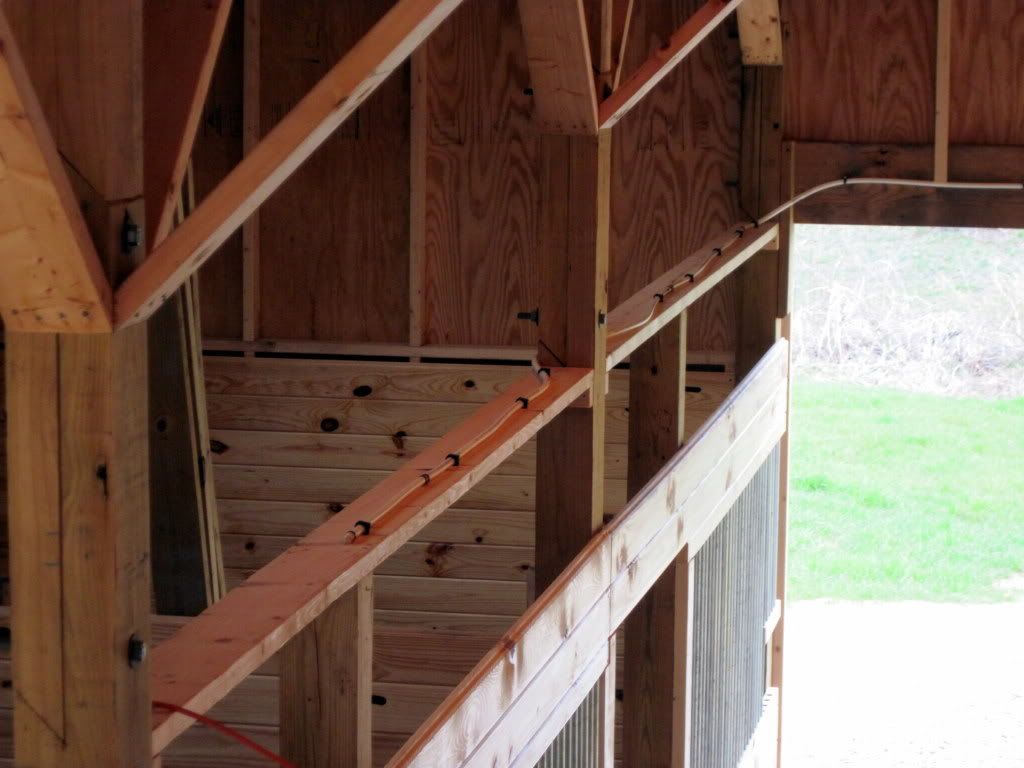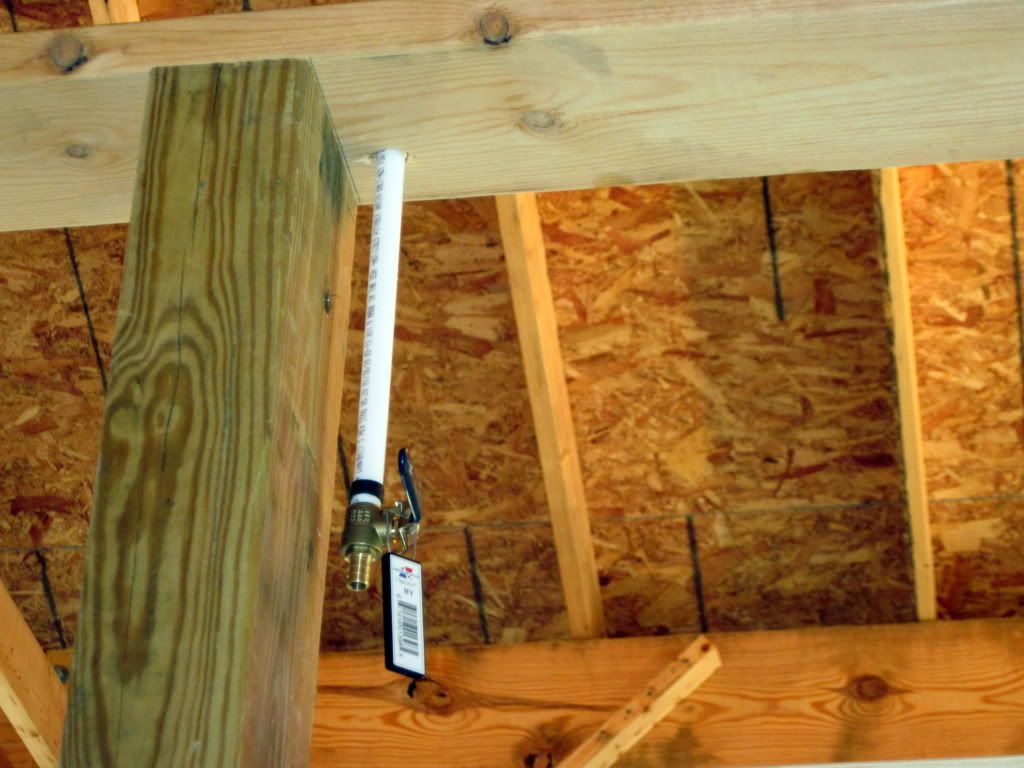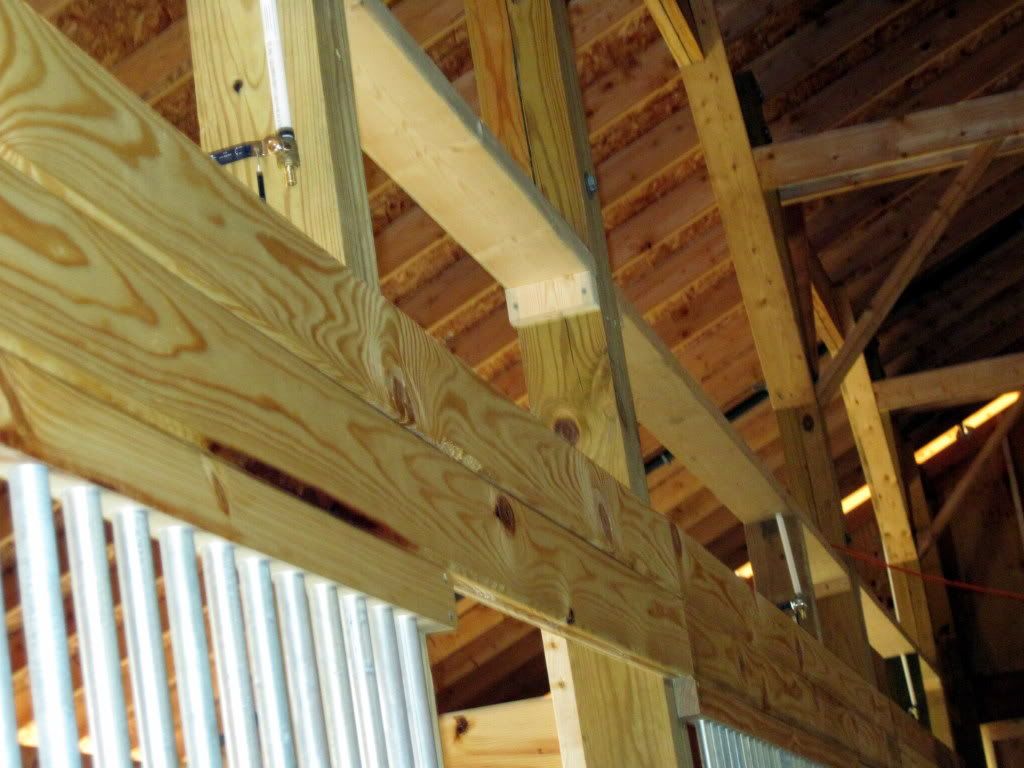Step 15: Plumbing
I finally have running water inside the barn. And better yet, it only runs when I want it to.

The big challenge here is freeze prevention. The barn isn't heated, so I need to take precautions to prevent freezing. In the best case, frozen pipes would mean there'd be no running water downstream from the ice-dam. In the worst case, it would mean ruptured pipes, spraying water, and wet hypothermic horses.
I'm using a two-pronged approach to mitigate the risk: First, I'm using pex everywhere inside the building, since it can stretch significantly without rupturing. Hopefully that will be enough to limit any freezing to the simple inconvenience of no running water until it thaws. Second, for all the critical runs I've wrapped the pipes with heat tape and insulation. The heat tape is 2W/ft and has a built-in thermostat that turns it on whenever the inside temp falls below 38F.
The main line (3/4" pex) comes into the barn through a conduit along the outside of the building and up through the soffit (which is yet to be installed). Once inside, the line runs up along a rafters, through the ridge pole at the peak, and back down the other side of the barn toward the tack room, where it drops down to the hot water heater. At that point, I installed ball valves and ran hot and cold lines through the tack room wall over to a shower valve in the wash rack. These lines will also supply a utility sink in the tack room, but I have yet to install it. Everything mentioned so far includes heat tape and insulation, including the conduit up the outside of the barn and the shower valve and the associated output running to a hose bib in the wash rack.
Meanwhile, back on the other side of the aisle, closer to where the water line comes in, I've teed off a 1/2" pex run that feeds all five horse stalls and (eventually) the bathroom. Each horse stall has its own cold water branch with a ball valve. These will feed automatic waterers in each stall (basically a bowl with a float valve). None of the 1/2" lines are insulated or heated, so they may freeze on particularly cold winter nights. Hopefully, between the body heat generated in the barn from the horses and the occasional water flow as they drink, freezing will be rare.
Here are some of the latest pics:
The hot water heater.
The back side of the shower valve in the wash rack.
The shower valve as seen from the wash rack. The handle and escutcheon are missing in this pic because my wife was in the process of putting polyurethane on the wall.
The lines to the horse stalls:
. Will you be boarding-out, to help recover some of your cost? Or is this strictly a 'labor of love' for your & wifes critters? Beautifully done!!! ~Scotty
